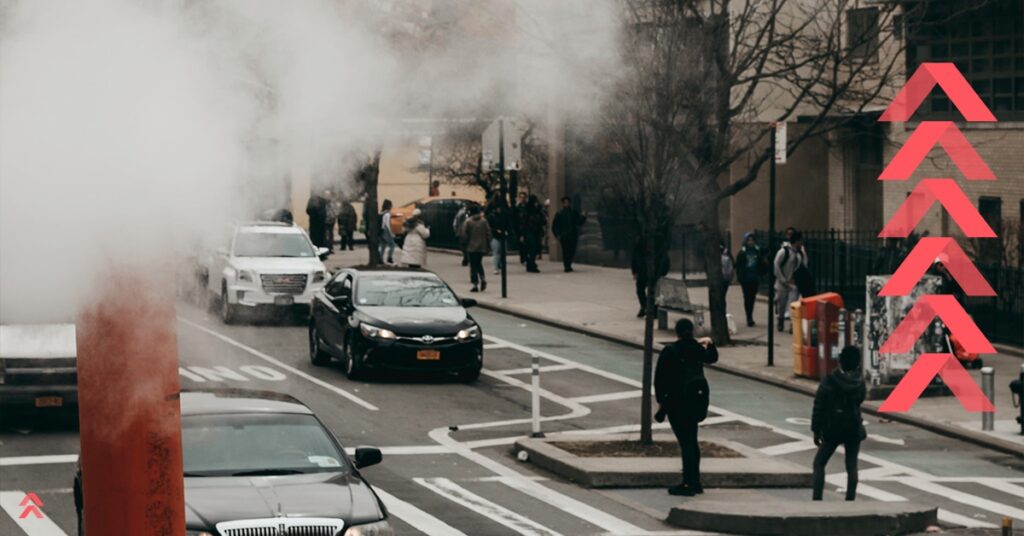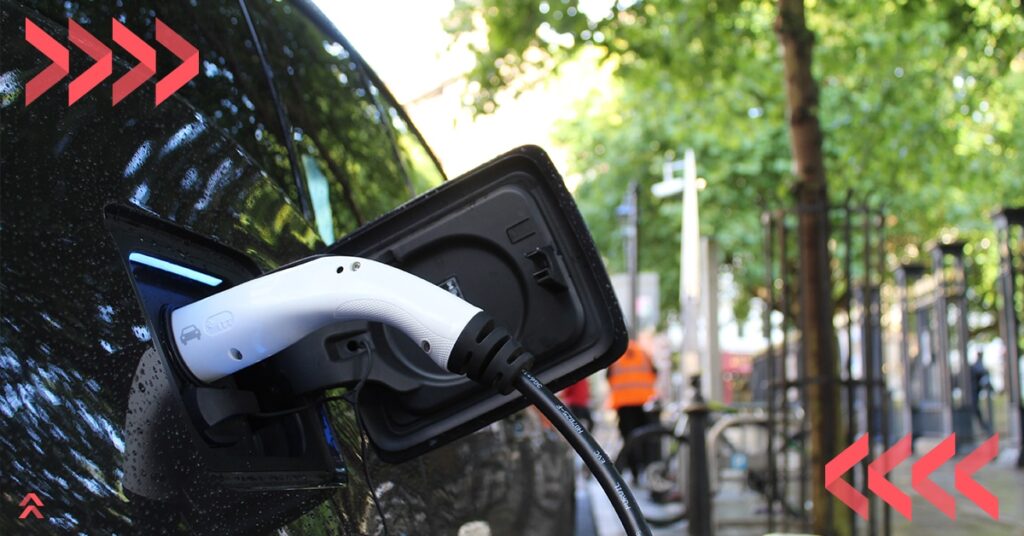It has been a year since a global pandemic forced us to rethink the way we live. In that time, behaviors around grocery shopping, dining out, attending events, and going to work and school have all evolved. First, with us ceasing to do them at all. Then, cautiously easing back into what we hoped would be a sense of normalcy.
But in our returning to “normal”, the same activities were marked by very different habits. Menus became QR codes, grocery delivery became second nature, cubicles became couches. And the evolution didn’t end there.
Even as vaccine rollouts begin and a post-pandemic world comes into focus, consumer willingness to learn new behaviors in exchange for greater value is persisting. And in 2021, brands and municipalities have an opportunity to shape the behaviors that will endure in a post-covid world.
Late last year, we invited a small group of smart city specialists, municipal leaders, and mobility innovators to gather for a bourbon tasting and talk about what the upcoming intersection of technology, consumer behavior, and government policy looks like.
This is what they had to say.
Partnerships

At the beginning of the pandemic, municipal governments had to reevaluate the resources at their fingertips. In many cases, that meant turning to private companies for specialized technologies to meet new consumer demands.
In the private business sector as well, weaknesses were exposed in the first half of 2020 and companies have since pursued partnerships and mergers that match up entities with complementary strengths and weaknesses.
These private-private partnerships in particular support coopetition over competition: the idea that working in tandem with like businesses is the best path to mutual success. Rather than competing against each other and harboring innovation like secrets, progress is shared and celebrated to move the industry – and everyone within it – ahead.
Kevin Bopp, the VP of Parking and Mobility at Bedrock Detroit, has worked on partnerships with the likes of Ford, Bosch, and the City of Detroit to bring the motor city’s parking and commuter support systems into the 21st century. Now the area, including the Detroit-to-Ann Arbor mobility corridor, is one of the nation’s most notable testing grounds for smart mobility.
Bopp believes that “as Detroit endeavors to continue attracting leading companies, startups and talent to the state, it will be public-private partnerships working in concert to push the pile forward.” And the consensus among other smart city specialists is: he’s right. The majority of these projects focus on shifting commute dynamics and manage to simultaneously advance the city’s smart mobility initiatives and independent innovators in the space. Innovation is being rewarded and the results are encouraging to Detroit’s municipal leaders.
“In the 18 months leading up to the pandemic, our programs really gained traction. We’ve created commuter mode shift of about 7% in a population of internally 18 or 19,000 Detroit-based team members,” Bopp recalls.
Benoit Reliquet, the President of Flowbird North America agrees: ”I think Detroit is the perfect example,” he says, “we can see that there was direction given from stakeholders in either the public or private sector and it’s clear there was a handshake between those stakeholders to make things happen. Technology is the enabler.”
That brings us to the critical technologies that are making digital transformation possible.
Lead the Charge
A FREE eBook breaks down the numbers behind the EV revolution and highlights parking’s critical role in the big picture. Hint: there’s a big opportunity you don’t want to miss.
Cloud

From hospitality to education, every industry is making the move towards cloud. And cities are, too. Making these valuable public-private and private-private partnerships a reality hinges on having cloud-based and open-API systems.
Today, there is more data being collected, shared, and accessed remotely than ever before. And that trend isn’t slowing down anytime soon. Once thought to be an advantage in business, the cloud has truly just become the standard. Now, it’s what you accomplish with cloud that makes all the difference.
Adam Jones is Vice President of Operations with the Downtown Tempe Authority. For him, cloud has been an absolutely essential feature. In fact, that’s why Flash resonated with him immediately. He remembers thinking “Wow, this is what I’ve been looking for: something I don’t have to struggle with maintaining or paying to fix constantly, that plays well with others like a true cloud-based system, that can integrate with other APIs.”
For Jones, customer service was a top priority. He wanted the ability to add consumer-facing platforms to improve wayfinding. So, he decided cloud was the way to go. It’s a perspective he shares with many others in smart mobility. For this industry to have a future, it has to be powered by the cloud.
Dynamic Curb Management

When Uber Eats drivers and Amazon trucks replaced commuters on our city streets, the curb became one of the most valuable strips of land in every city across the country. The sought-after space was so limited in cities like New York that in 2019, UPS, FedEx, and other commercial delivery companies racked up over $123M in parking fines.
Whether it’s standard fees or fines, this revenue is a critical part of funding urban mobility projects. For Gary Means, the Executive Director at the Lexington Parking Authority, revenue from on-street parking has helped prop up assets off street as the city brings its parking structures up to modern smart-city standards.
Last year, Means was asked to serve on a curb management task force where he saw firsthand how difficult it can be to get momentum behind smart city projects until there’s an immediate and tangible value to be realized. He has observed that “the smart city conversation often comes from a New York perspective,” and acknowledges that “the majority of cities don’t have that top-down directive to make progressive changes when you don’t know what the outcome will be.”
It’s a lot easier to suggest a bike lane than it is to replace the revenue from the seven parking spaces that bike lane takes over. Means agrees, though “that he’s willing to do whatever is best for the curb – as long as I know a revenue stream is still coming.”
In the year ahead of us, Means sees municipalities starting to implement the technologies they now have access to, because they’re finally monetizable. When the problem gets bad enough that it has a financial impact, or the alternative is great enough that it improves the bottom line – that is when the future we want can be reached in our present reality.
That’s exactly what Brandy Stanley, The City of Las Vegas’ Parking Services Manager, has experienced. She is working on an exciting curb management project with the city: digitally mapping out every single inch of their downtown curb. Stanley explains that “the system will be able to identify violations such as being too close to a stop sign, fire hydrant, driveways, all that kind of stuff.” At the crux of this new revenue endeavor is Artificial Intelligence. Once thought to be too superfluous for something like parking, AI is suddenly practical to implement because it’s tied directly to revenue generation.
Fleet Services

From its inception, ridesharing has been one of the worst offenders when it comes to illegal curbside parking – but that’s not to say contracted drivers are to blame. Uber and Lyft entered the mobility space at a time when urban infrastructure lacked proper accommodations for the business model.
Between rides or waiting for riders, drivers are left with a choice: circle blocks or idle at a curb or in a vacant lot somewhere. The former option wastes gas and puts more miles on their car, contributing to urban congestion and emission. The latter often ends up being the better choice for drivers, as they’re wasting less gas and might even have time for a snack. For cities, however, these cars begin to congest the increasingly valuable curb without a contribution to critical parking revenue.
It’s a catch-22: with no revenue to compensate for these cars occupying spaces, cities lack the funds for the right infrastructure. It’s a problem that has only worsened in the wake of COVID-19 as consumer dependence on delivery services rises.
Whereas a personal vehicle going to pick up dinner or visit a store would pay for parking, delivery drivers work at a much faster pace. So, while a steady stream of delivery drivers may be occupying a single space all day, it’s just for a few minutes each.
Downtown Tempe Authority’s Adam Jones puts the technology to accomplish this goal at the top of his list of priorities. Targeted enforcement for TNCs and finding new ways to manage increased demand for services like Postmates, Uber Eats, and Door Dash on-street and off-street.
Cities are acknowledging that the toll of congestion and forfeited revenue are costly enough problems that they’re worth getting ahead of. Giving fleets a place to stop will be the only thing to keep the peace between logistics and delivery firms, their drivers, municipal leadership, and the communities they serve.
In Las Vegas, Brandy Stanley is working with Flash and Uber to allow rideshare drivers to park in unoccupied municipal garages at night. Getting these drivers off already congested roads along the main strip, even for free, is a lesser cost to the city. And with frictionless Bluetooth access within the Flash app, getting in and out of the garage takes just seconds. In a garage or lot that’s sitting empty anyways, this is one of the city’s best dynamic uses of property for emerging mobility needs.
Autonomous and electric vehicles

Commitments to go fully electric and promises of autonomous fleets have made these investments even more sound to city governments. Fleets will have greater public charging demands than any privately own vehicles; a contract Uber driver isn’t going to head home to charge their car in between rides.
If the delayed response to ridesharing has taught them anything, municipalities know that maintaining the benefits of new innovations in mobility without succumbing to the negative effects requires preemptive action.
In the case of autonomous and electric vehicles, that means outfitting infrastructure now – if you haven’t already.
Jim Mark, CEO of Melvin Mark, has been a long time EV owner, as has his son. Mark explains that his son, after purchasing a Tesla, didn’t want to put up the money to install a charger in his house and completely relied on Tesla superchargers. Seeing the growing demand for public charging, Jim Mark recognized the opportunity and now puts EVs on the ground floor of his garages with other amenities, explaining that “we want to push that from a green energy standpoint, it’s a move in the right direction.”
Managing Director of URBAN-X, Micah Kotch, explains that in 2020 “EVs were at the top of the hype circle.” But that doesn’t mean they’ve realized their peak in reality. 2021 is the year that all that conversations about EVs become reality.
For Kotch, Uber’s commitments to fleet electrification hinges largely on access to fast public charging. But fast charging isn’t the whole story; Brandy Stanley notes that there’s also a huge market for chargers that don’t fit the “gas station model.” Drivers of personal EVs are more often just taking advantage of chargers in garages where they’d already be parking or, as Stanley notes, choosing to park in a garage because it has EV charging. “So, now even a charger is an amenity,” she says.
As we strategize for the year ahead, we’ll see these trends start to take shape. And a lot of them will occur in the mobility space first: on our curbs, our sidewalks, and in our parking garages.
Every new behavior a consumer adopts has a domino effect on the technology they’ll come to depend on. Choosing an electric vehicle over an internal combustion engine will forever change the way that consumer parks and thinks about travel. They’re likely to start searching for nearby garages that have charging and planning the distance of longer trips to ensure they’ll make it with the right stops in between.
The ways consumers choose to make their journeys faster, more efficient, and more affordable will change how mobility coexists with every other function in the smart city. That’s why it’s up to these intelligent city planners, leaders, and innovators to anticipate what our cities and their communities will need next.
If you want to stay current with the way our cities and mobility are changing, subscribe to our newsletter.
Join the Parking Revolution, Subscribe to Our Newsletter
We’re disrupting the parking industry because we believe our customers, consumers, and cities deserve better.
